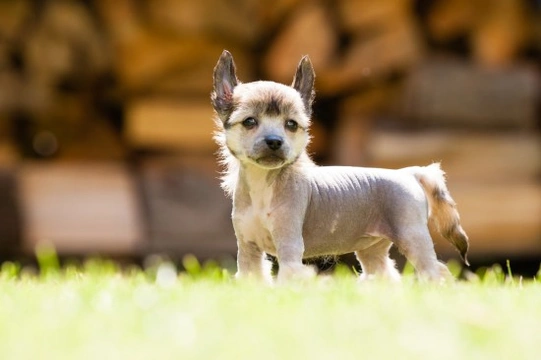
Health and care of a hairless Chinese crested dog
The Chinese crested dog is a hairless dog breed that can be found in two variants within the same litter, one of which has fur and the other of which does not! The hairless is, as the name suggests, almost totally bald, while the powder puff variant has fur, and at first glance, may appear to be a totally different breed.
While the two types are classed as the same breed, the hairless variant is of course very different, and comes accompanied by some additional care requirements due to the scarcity of their fur. In this article, we will look at what is required to care for a hairless Chinese crested dog, and their general health and wellness. Read on to learn more.
What causes the hairless variant?
The hairlessness trait within the breed is caused by an incomplete dominant genetic anomaly, causing the majority of the body to be hairless and present as bare skin. The dog has hair on certain areas of their body, including long, silky hair on the top of the head, a plumed tail, and socks of fur on their paws. The amount of hair and the density of the hair on the hairless variant depends on the individual dog, with some being very sparse in the fur department, while others have thick, flowing hair on the tail, head and legs.
Caring for a hairless Chinese crested dog
You might fairly assume that a dog with little to no body hair is very low maintenance in terms of grooming, but their skin does require regular care and attention. The texture of the skin on the body is considered to be similar to that of human skin, and as such can be prone to all of the same problems that people may suffer from, including spots and acne, sunburn, and dryness.
It is recommended to bathe the hairless variety regularly to keep their skin clean and in good condition, and to apply a gentle, hypoallergenic moisturiser to the exposed skin too to prevent dryness. Notably, the breed as a whole regularly produces dogs that are allergic to lanolin, a common ingredient in many soaps and moisturising products, and so care should be taken when selecting products to use on the dog’s skin.
Due to the fact that they do not have any fur to protect the skin, the hairless Chinese crested is particularly prone to sunburn during the hotter months of the year, and special care should be taken of the dog’s skin when they go outside. They may need to wear a t shirt to protect them from the sun, and will almost certainly need to wear a gentle, high SPF factor sunscreen when the sun is bright.
They are also prone to feeling the cold in the winter, of course, and it is important to ensure that you can keep the dog warm enough with heating and possibly, a range of jumpers and coats!
The feet of the Chinese crested dog breed is also rather different to that of most other breeds, being classified as a hare foot rather than the more common cat foot. A hare foot has much longer toes than a cat foot, and causes the quick of the claws to be much longer than you might expect, meaning that special care must be taken not to nip the quick when trimming the nails.
Health and longevity
The Chinese crested is a relatively long lived breed, with dogs commonly reaching twelve to fourteen years of age.
The hairless Chinese crested dog has an unusual tooth formation which is known as a “primitive mouth,” causing the majority of their teeth to be pointed rather than flat, like their canine teeth. The hairless variant of the dog also tends to produce a reasonable number of dogs that have poor tooth formation or problems with the jaw and the bite, including too many teeth in the mouth, incomplete dentition, or a propensity to a high plaque and tartar build up, leading to tooth decay.
The breed is also prone to a range of eye problems, including progressive retinal atrophy, which can lead to blindness. Primary lens luxation is another potential problem, and some pre-breeding sight tests can be performed on potential parent dogs to identify the chances of problems with the litter. Dogs found to have a poor eye score should not be used for breeding.
The hairless Chinese crested is also somewhat prone to developing allergenic conditions, which can present as skin disorders and other problems. Special care should be taken when selecting products to care for the skin of the Chinese crested, and the diet should also be chosen carefully with a mind to avoiding any potential allergens.
The Chinese crested dog is also a breed that is prone to development of a condition known as progressive neuronal abiotrophy, which is a movement disorder that begins when the dog is aged around ten weeks old. The condition progresses as the dog ages, and leads to dyspraxia, lack of coordination and frequent tumbles.



